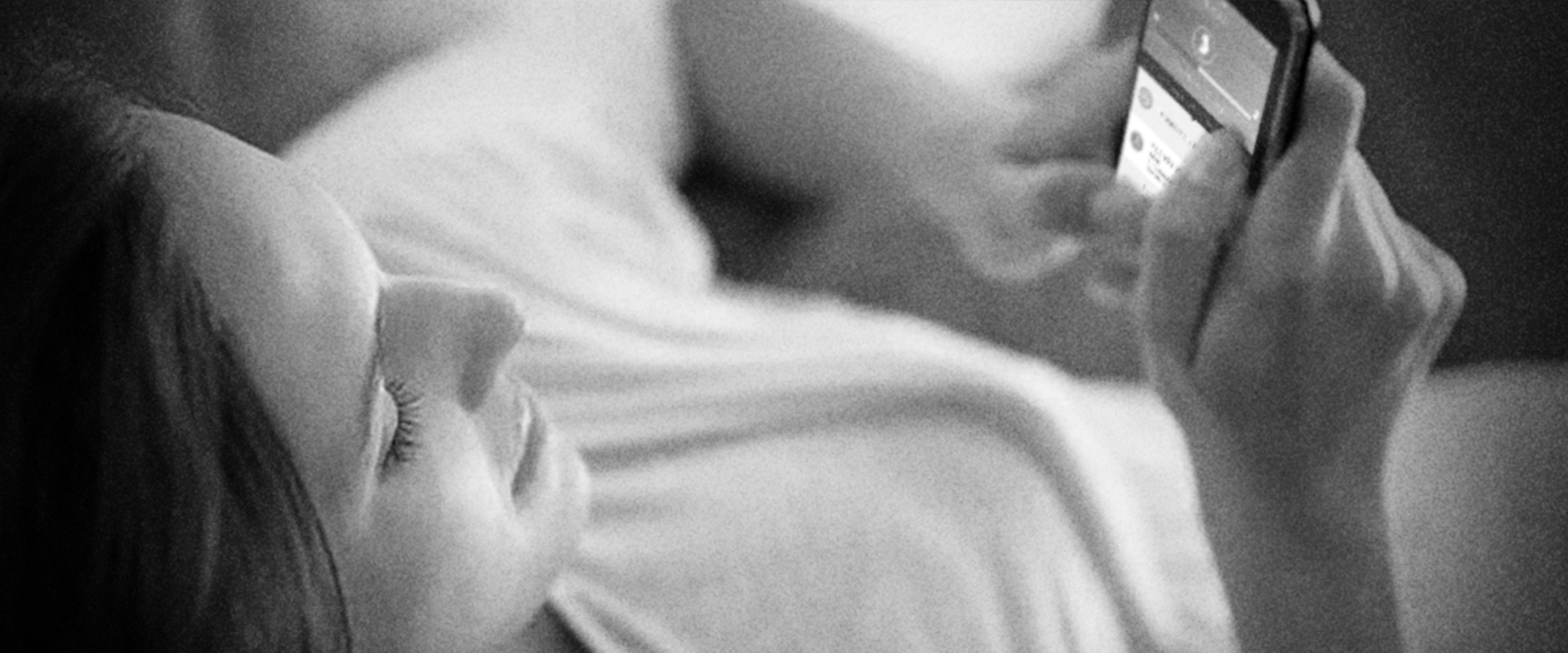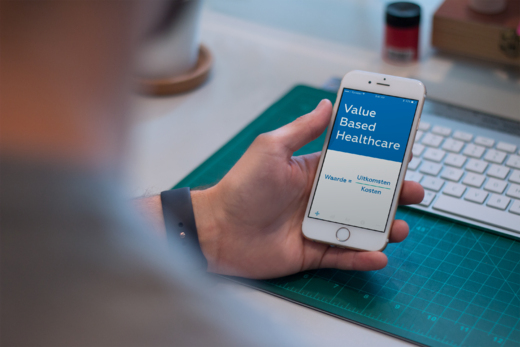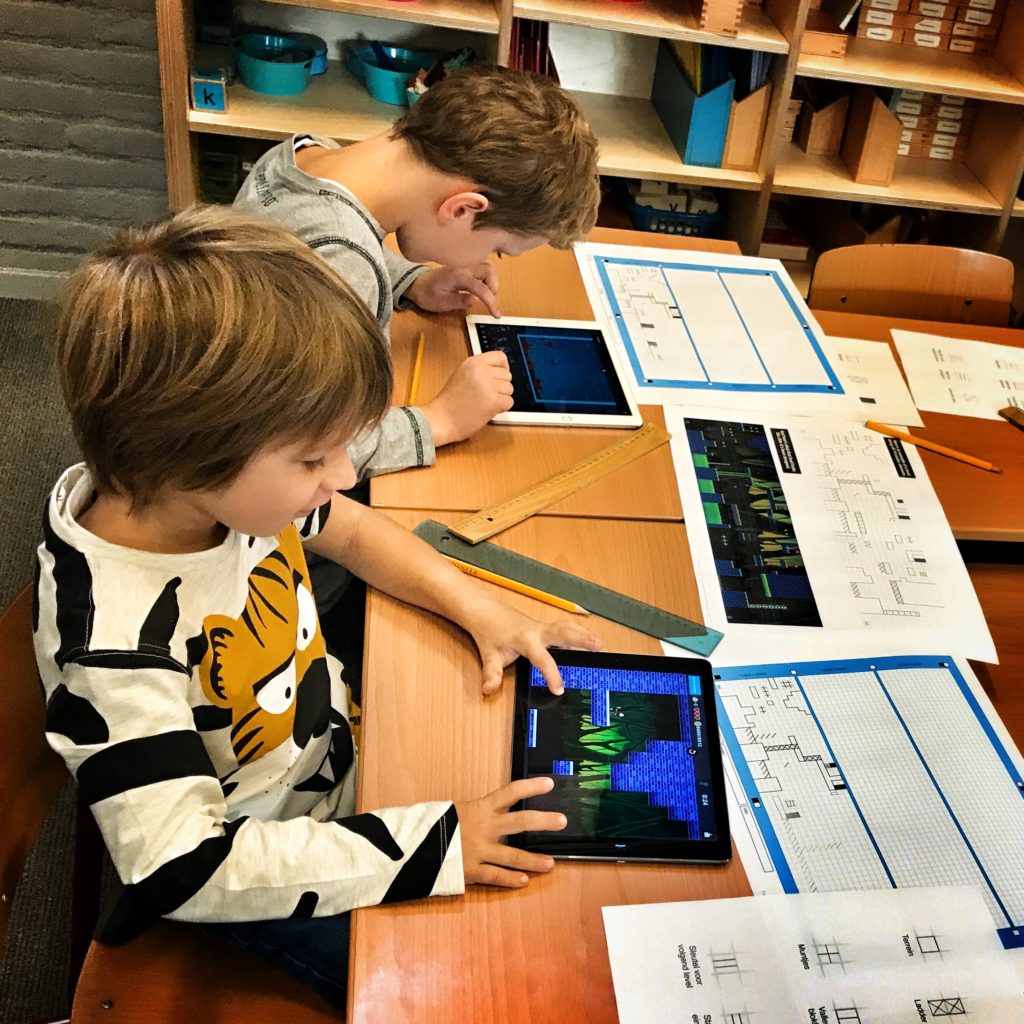Anyone who takes a good look at the Dutch healthcare sector may get a feeling…
Patient Generated Health Data

According to scientists and certain optimistic enthusiasts, we might be ready to send the first person to Mars as early as 2034! Even as we speak, preparations are underway to give shape to this unimaginable challenge, and the eager queue of volunteers willing to be part of the first commercial expedition is astounding…
A mission to Mars represents a combination of human courage, unprecedented expertise and unbridled confidence in the possibilities of technology. In that respect, we can see similarities with healthcare. For the mission to Mars, besides from the obvious technology such as sufficient thrust force and reliable landing gear, another technological aspect is of crucial importance for its success, namely ‘Astronaut Generated Health Data’. This term probably hasn’t been coined yet, but the fact is that during a trip to Mars 35 different parameters will be continuously measured for each astronaut, and they will be monitored – albeit with a time delay of approximately 20 minutes – analyzed and linked back around the clock by some of the best brains on our blue planet. The measurements of oxygen, heart rate, ECG, HRV, blood pressure, temperature, activity, weight, muscle mass, muscle tension, respiration, sweat composition, location, and similar parameters will cause an unprecedented amount of data flows.
The 5 pillars of healthcare data: Determine, collect, record, process and discuss
And now, back to planet Earth anno 2017, the healthcare sector is undergoing a similar development: data collected in direct by the patient is becoming more and more important. We don’t need to wait for Martian technology to be beamed down to us. Already now, a range of patient-related parameters can be remotely read out and monitored. Now you might be raising an eyebrow and wondering if there is any kind of patient-data that hasn’t been generated by a patient. Well, it’s just a matter of semantics: the most obvious patient-data is gathered in the hospital setting and tends to also be stored, processed and discussed there. Think about it, MRI scans are not done at home, and their interpretation and explanation should be left to professionals. But, there is a growing form of data that can easily be gathered by patients in direct. Technology has made it possible for this ‘patient-generated data’ to be determined, collected, recorded, and processed. Just the ‘discuss’ element needs to be done with a healthcare professional. For some physicians this development is a real manna from heaven, for others it’s the exact opposite.
The scope of PGHD is made clear by Sara Riggare, a Swedish Parkinson patient: “Per year, I spend 1 hour with my doctor to discuss the progression of my illness and to adjust my medication if required. Then I spend the other 8765 hours of the year self-managing my health”. It is precisely that ‘self-management’ that is ideally suited to mobile apps on the smartphone; after all, this device hardly ever leaves one’s side, is crammed with sensors and is connected to the internet 24/7. The availability of over 260,000 health apps that all together have been downloaded 3.2 billion times (research2guidance, 2016) stands testament to the solid interest surrounding the potential of the medium. Recent research by Accenture (2016) demonstrates that the use of health apps and sensors has more than doubled over the last few years (from 16% to 33% and from 9% to 21%, respectively). But should we also just simply accept the fact that it has become impossible to make a sensible selection from among this quarter of a million available health apps?
Value for healthcare
What we are talking about is ‘Patient Generated Health Data’ (PGHD); it has the potential to generate a continuous flow of useful data for the healthcare sector. That ‘usefulness’ is the subject of many debates and discussions on which the views are much divided. Is this a case of “old wine in new bottles?” wonders Dr. Eric Topol, cardiologist, author and known advocate of innovative technology in the healthcare sector. “After all, home pregnancy tests already existed in the late Seventies, and self-testing of blood glucose has also been done for years. But what we are talking about now is an unprecedented scalability of digital technology and sensors that can collect data via a smartphone. In principle, several of the measurements that are currently carried out by a doctor will soon be done by patients themselves” says Topol. In general, there are three key areas where PGHD will play an unmistakable role.
1) Value-Based Health Care
By adopting ‘Value-Based Health Care’ it is clear that a shift is taking place in which the patient is finally taking up center stage. The patient’s own involvement in a continuum of care, instead of the usual classification of first, second, or x-line care will play a crucial role. This continuum of care represents a switch from fragmented to ‘connected’ care, from volume to value creation, and from episodic to ongoing care. The aim of this article is not to cover Value Based Healthcare in detail, but it does need to be said that the value of healthcare is characterized by, on the one hand, better quality and on the other hand, lower costs; the combination and balance of both these factors is what we want to end up with. Costs are easy to measure, quality is a less tangible matter. Patient Reported Outcomes (PRO) play an important role when it comes to the quality factor. The International Consortium for Health Outcomes Measurement (ICHOM) is a non-profit organization with the objective to transform the healthcare system by measuring and reporting patient results. A standard set of ‘outcomes’ have been determined for numerous medical conditions on a global scale, enabling caregivers to compare, learn and improve. The objective is to have mapped half of all clinical conditions in 2017. Currently, standard sets exist for 21 conditions including cardiovascular and neurological problems, natal care and locomotor system problems, all based on the most relevant clinical variables. How could PGHD not play a key role in that?
2) Clinical research
For clinical research data forms the basis of any (scientific) study. Major challenges are finding the right patients in sufficient numbers and acquiring high-quality, validated and authenticated patient data. “In clinical research it is difficult to obtain a sufficient amount of objective patient-data. The commonly used questionnaires aren’t specific enough and only provide a snapshot of the clinical history. For example, I’d really like to know, in the framework of a study on meniscus implants, the actual activity of the enrolled participants, instead of the vague note that the patient has been moderately active” says Dr Joris Bannenberg, Chief Medical Officer at Factory-CRO.
There are all kinds of legal hurdles that have to be cleared before PGHD collected by ‘consumer technology’ can actually get off the ground. ePRO-platforms (electronic Patient Reported Outcomes) are often just reproductions of existing IT legacy systems that completely flout all modern Mobile User Experience principles; they can look quite good on a website, but the results in the field amount to nothing. One needs to acknowledge that the modern patient knows what simplicity is thanks to their smartphones. Anything that is less user-friendly than Facebook et al is going to have to deal with poor user acceptance.
3) Changing patient behavior. The 6th pillar?
A third, and probably the most appealing and promising aspect of PGHD is how it can link back to the patients themselves, inducing behavioral change in order to improve their health. ‘Positively influential’ seems to be a very apt term! Data on its own isn’t very informative; it needs to be translated into contextual, medically-relevant and action-oriented information. For example: systolic blood pressure of 140 maybe sound fine to patient a, but cause a panic in patient b. Furthermore, every situation (the context) is different, and the aforementioned blood pressure needs to be given a different interpretation depending on whether it was measured before or after physical exertion. Through algorithms that analyze the data, digital interventions/notifications can be used to tell the patient what they need to do. In addition, the patients can obtain a data overview in the form of info graphics, which helps them obtain more insight into their health situation. This concerns ‘little data’, more so than ‘big data’. Finally, through gamification-elements patient data can be used to provide insight in a more dynamic and playful manner.
Behavioral change is a highly complex matter that comes along with several important ethical questions. In addition, we still need to ascertain to what extent mobile technologies can positively influence behavioral changes, but that question is better suited to the field of Persuasive Technologies (another subject that we’d be happy to write an extra 2500 words on). There is an increasing amount of empirical data available that does demonstrate the (positive) effect of mHealth in this context and it therefore seems clear that the topic deserves further exploration.
Artificial intelligence and PGHD
It is clear that PGHD is only of interest when it is accompanied by some sort of interpretation. Currently this interpretation is provided by the healthcare professional, but increasingly we see that such interpretations are supported by digital input. This is called ‘Clinical decision support’. It is generally expected that increasingly complex algorithms that can analyze all kinds of data will emerge and that these will eventually be able to reach conclusions and give advice in a more and more autonomous manner. Artificial intelligence (AI), where self-learning computer systems based on neural networks provide services to mankind, has left the realm of science fiction a long time ago. Indeed, both Apple and Google provide tools to implement self-learning neural networks in the development of mobile apps, including medical mobile apps. Look at Watson, IBM’s medical super computer that, on the basis of many years of training with thousands of oncology related publications, ended up prescribing a better treatment plan than an actual oncologist.
In complex AI systems the reasons for why the computer has taken a certain decision are not always clear; this can be because, for example, the code itself was written by the software and can’ translate back into a humanly comprehensible logic. To what extent this causes technological singularity is still unclear, but what is certain is that this path has already been embarked upon. Without wanting to create a doomsday scenario, in which iPhones turn into a modern version of SkyNet and command an army of Terminators, a frank discussion of AI’s role in healthcare does need to take place.
Privacy and security
There isn’t a blog or white paper on digital innovations in healthcare out there that doesn’t address privacy and security. And rightly so. Patient data can contain sensitive information and should be treated as such. The potentially vast amounts of collected data, especially where sensors and wearables are concerned, will be equally desirable to those with dodgy intentions. Every digital solution must therefore comply with rigorous requirements to minimize the risk of data leaks; this tends to be implemented on two levels: the product- and organizational levels.
Product level
Current laws and regulations dictate that every digital application whereby PGHD contributes towards a diagnosis and/or treatment, and/or whereby data is processed in any shape or form (for example, via an algorithm) must have the corresponding CE certification. Typically this concerns class 1 (self) certification for medical devices with a low-risk profile, or class 2 for devices with a high(er)-risk profile, such as glucose meters or ECG-sensors. However, with the arrival of a whole host of smart consumer-wearables and sensors that are linked to software and thus increasingly belong to the medical field, the choice between category 1 and 2 is often not so clear-cut. To exemplify: does an app that collects PGHD via a class 2 certified blood pressure monitor also need to be certified as a class 2 device? And is there a difference between when the smartphone (and therefore the app) is directly connected via a cable and when it receives records/files via a Bluetooth wireless connection? The experts haven’t yet reached any kind of consensus on the matter!
In addition to the (not always very clear) rules and regulations, the technical field itself can of course do its bit to make sure that the collection of PGHD is as safe as possible, thereby guaranteeing patient privacy in as far as possible. From the last sentence one can gather that 100% protection in a digital world is unfortunately simply not possible. Encryption, a cleverly set up database structure, and physical control over who can access the data where and when, are all things that are readily available and must, therefore, be implemented; these measures will enable us to get as close as possible to the 100% safe mark.
Organization level
Any serious developer of software designed for the collecting, storing and processing of PGHD will have to comply with the legal requirements in the field of NEN and ISO certification (specifically NEN7510 and ISO27001). It is not sufficient to simply mention that the hosting provider who physically stores the data is adequately certified. It is at least just as important to determine who of one’s own staff has access to the data and under what conditions that access is granted. A fully certified organization does not equal absolute guarantees (as experience has taught us from the Snowden-case), but it does indicate that procedures have been put in place to reduce the risk and that the organization takes privacy and security seriously.
Getting started with PGHD
Implementing PGHD in daily practice means bringing about a change in how we see things. It is important to start off small. The chance that data is already being collected is quite high, albeit through more traditional methods (paper questionnaire?). It all starts with a vision on the value of PGHD and the willingness to invest in it. Choose realistic objectives that are attainable as of when the expected added value for the healthcare process and/or the patient has come to fruition. Value-based healthcare (= health outcome / costs) should be taken into account. When determining the software requirements it is important to select a platform that is scalable and flexible; so, start small and expand it in accordance to the relevant phases as they actualize.
Implement a process that is as similar as possible to the existing one so that the change for the employees is minimal. Describe and train the procedure so that it’s clear to all who does what and when. Don’t forget to consider the human factor first and give the software a secondary role. We live in a world where a caregiver is expected to also have a NASA-degree in order to operate the average HIS or EPD…so let’s try to opt for software platforms that offer a good degree of user-friendliness. Finally, learn from mistakes and build on successes.
After all, this approach is what helped put mankind on the moon, and soon perhaps on Mars.




